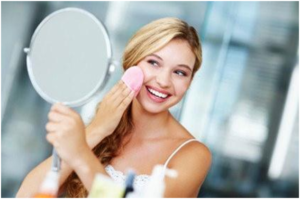How to deal with skin pigmentation

As we age, the one way in which most of us believe we show this aging process is on our skin. This is not only with wrinkles and crow’s feet but also uneven skin tone and pigmentation, which may well make us look older than our actual years even when we are younger.

Most of us do not mind the odd freckle; however, larger, uneven patches on hands, face and upper body can really be an annoyance. More and more people are choosing to embrace their skin pigmentations and this even includes a number of celebrities. If you are self-conscious about the pigmentation in certain areas of your body that are noticeable when you are wearing Maxi Dresses, for example, you may want to read on to find out the possible causes and solutions to this issue. You might also want to consider different styles of maxi dresses from ax paris and other stockists.
What causes it?
This extra pigmentation is caused by sun exposure, more specifically exposure to UVA light. Passing deep into your skin. these rays cause skin aging and pigmentation changes. The UVA causes your skin to produce extra melanin, which in addition to producing a tan can cause these darker spots and patches.
Besides affecting your skin, UVA and general sun exposure can take its toll on your hair. Consider using hair products designed to help repair and nourish your hair.

These brown patches and spots can take 10 or even 20 years to develop, so may date back to skin exposure when you were a lot younger or even as a child.
In younger women, pregnancy or use of the contraceptive pill may exacerbate the effect of sun exposure and lead to more of these dark patches.
Treatments and prevention.
You obviously want to avoid making the situation worse; therefore, protecting against future UVA exposure is a great place to start.
Eating the anti-oxidants often found in fruit and vegetables is not only good for your overall health but also really good for your skin tone and reducing the effects of sun exposure.
Reduce your direct exposure to UVA rays and the sun when you are outside by using a good-quality sunscreen with both high UVA and UVB protection factors. A BBC article explains how to understand what the label on your sunscreen really means.
Laser treatment is available for existing patches; however, this is expensive and the problem can reoccur. Bleaching creams are also available but can be quite harsh on the skin.
There are a number of specialist creams and brightening products designed specifically to help with pigmentation problems and the regular use of such a product can make a real difference to your skin.



